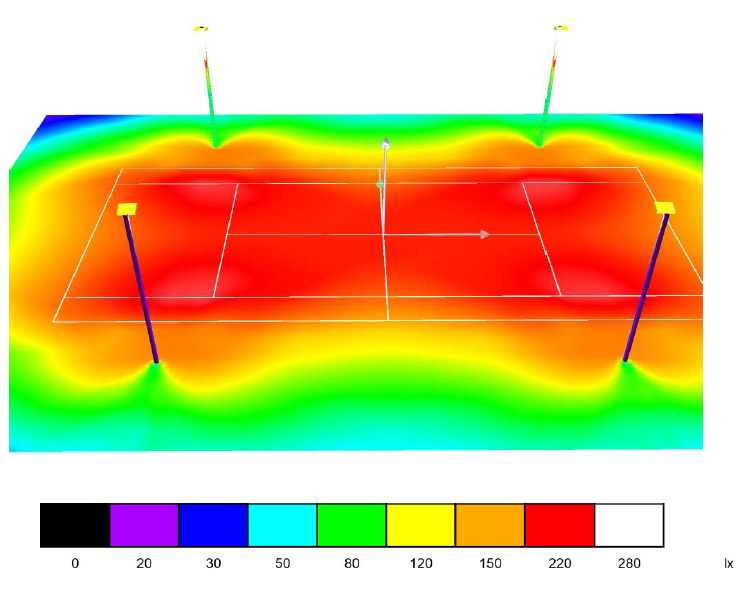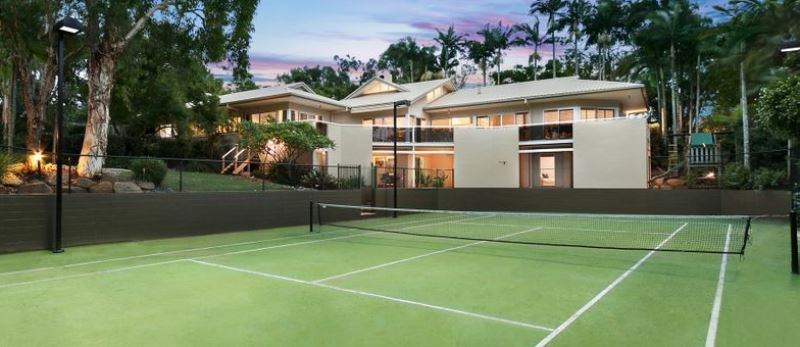 Loading... Please wait...
Loading... Please wait...- About Us
- LED Flood Lights
-
LED Lighting Projects
- Tennis Court LED Lighting Projects & Upgrades
- Netball Court LED Lighting - Case Studies & Projects
- Sporting Oval & Sports Field LED Lighting - Projects & Examples
- Lawn Bowls LED Lighting Projects & Upgrades
- General Area and Security LED Lighting - Projects & Applications
- Factory and Warehouse LED Lighting Projects & Applications
- Industrial LED Lighting Applications and Projects
- Help & Information
- Blog
- Contact Us
- Home
- LED Lighting Projects
- Tennis Court LED Lighting Projects & Upgrades
- LED Tennis Court Light Upgrade - Indooroopilly Queensland
LED Tennis Court Light Upgrade - Indooroopilly Queensland
Residential Tennis Court Lighting Upgrade
The owner of this residential property in Indooroopilly Qld with a backyard tennis court sought to upgrade his aging tennis court lights to provide improved lighting whilst controlling for obstrusive lighting effects so that neighbours would not complain. We selected our asymmetric lens tennis court lights which are specifically designed for tennis court lighting and are ideal for residential applications where there are neighbours in close proximity and where the elmination of tennis court light spill and tennis court light glare is very important.
In terms of Tennis Court Lighting standards our aim was to provide a minimum of 150 lux for social and recreational tennis play and a minimum uniformity of 0.6 with an option for club competition level tennis with an average of 350 lux. However, generally we can achieve around 250 lux for residential tennis courts whilst coming in within budget.
The design of the tennis court light in terms of fitting in with their existing asthetics in terms of size and shape of the tennis court light was also a consideration in the decision process. The tennis court pole layout was existing with a fix height of 6m.
In the Tennis Court Lighting Simulations a light loss factor of 0.88 was used. This allows for variability in the tennis court LED light output due to factors like colour temperature, chip output variability, aging and dust build up. However, arguably it could be set at 0.95 and usually we see higher light measurements on the tennis court when compared to the simulated tennis court light levels as shown below.
Note that the tennis court light levels for convenience were simulated at court surface rather than 1m above the court where they would read a little higher.
Pro Series 240W Tennis Court Lighting Simulation Results - LITE-EL-240-TC
Overall, the best tennis court lighting result was from our Pro Series Asymmetric Tennis Court Light LITE-EL-240-TC. The average light level from this tennis court light was even higher than our 300W Eco Series 240W Tennis Court Light due to the better efficiency of the lens shape for this court size and pole height and layout. The Pro Series Tennis Court lights do tend to focus the light a little more on the court where you want it with less light scatter around the court where you don't want the light. This allows us to get away with less power leading to even better electricity savings whilst achieving a higher lux level on the court as shown in the two simulations below.
With this tennis court lighting design for the Pro Series 240W tennis court light we achieved an average of 267 lux and a uniformity of 0.65 which was very satisfactory for a residential tennis court and exceeds Australian Standards. For interest sake we also ran the Pro Series 400W Tennis Court Light and achieved an average of 411 lux on court and a uniformity of 0.67.
Pro Series 240W Tennis Court Light Levels - LITE-EL-240-TC
Tennis Court Average Illumination = 267 lux, uniformity = 0.65.
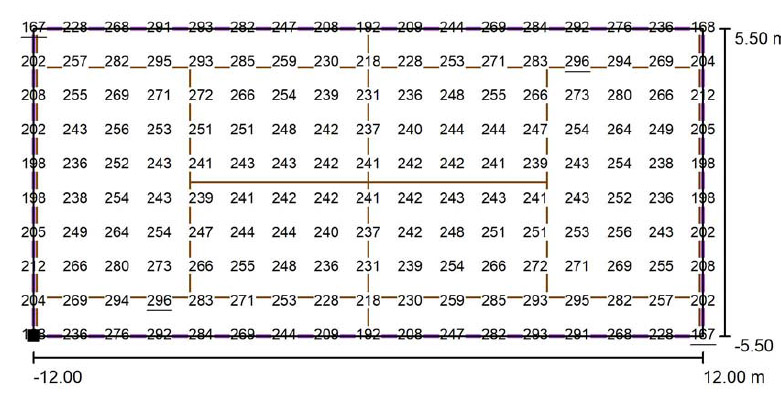
Pro Series 240W Tennis Court Light Colour Render - LITE-EL-240-TC

Pro Series 240W Tennis Court Light Installation Photos and Tennis Court Lighting Effect
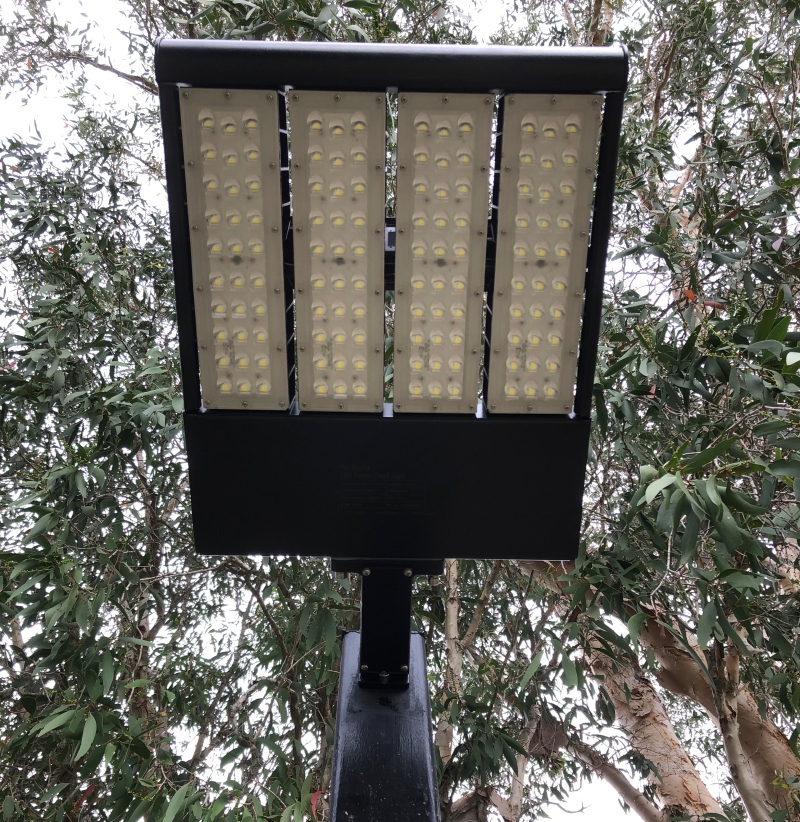

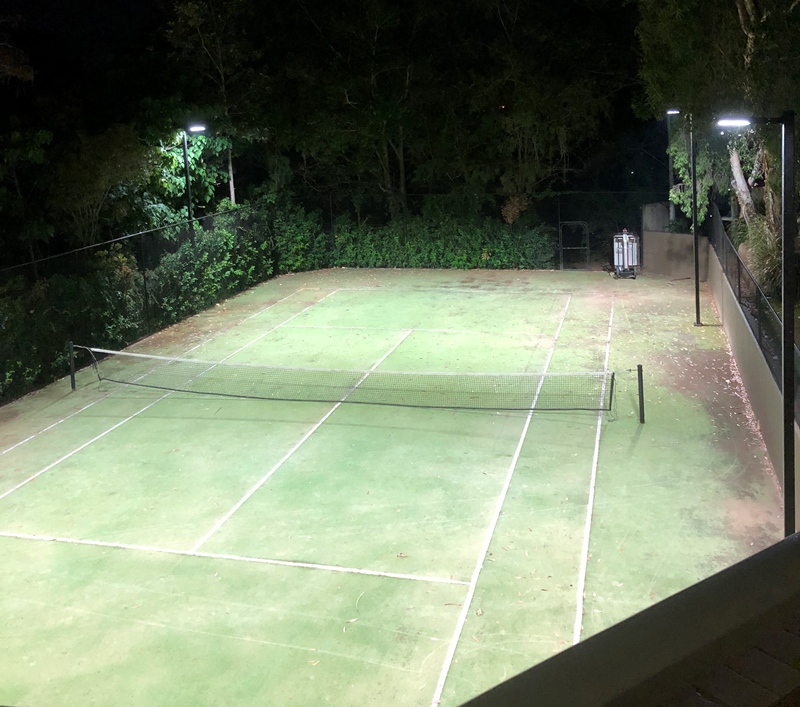
ECO Series 300W Tennis Court Light Simulation Results - LITE-SK-FL-300W-TP4
Our ECO Series 300W tennis court light is ideal for residential tennis courts due to still having the asymmetric lens system which eliminates light spill and light glare into neighbouring houses but offers a more economic light interms of price which often better suits the budget of home tennis court owners. With two asymmetric lens options we also have more flexibility in terms of pole height and position.
In the tennis court light results for the 300W ECO Series LITE-SK-FL-300W-TP4 shown below, whilst the average lux level on the tennis court is now lower then the PRO Series, the uniformity at 0.75 is higher, as the Pro Series Tennis Court Lights do generally work better at taller pole heights, although provide more light intensity at lower pole heights with slightly reduced uniformity. In this tennis court lighting example the ECO series also appears to put a little more light at the base line but does not have the intensity of the PRO Series Light.
ECO Series 300W Tennis Court Light Levels - LITE-SK-FL-300W-TP4
Tennis Court Average Illumination = 196 lux, uniformity = 0.75.
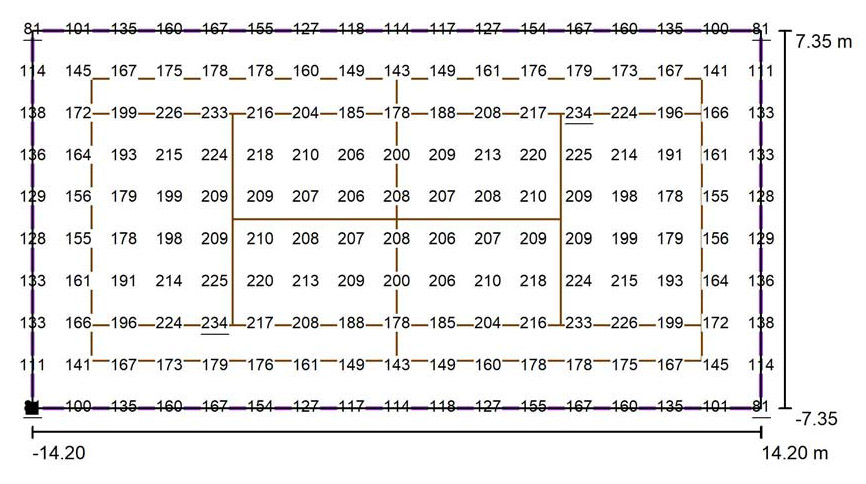
ECO Series 300W Tennis Court Light Levels Colour Render - LITE-SK-FL-300W-TP4
